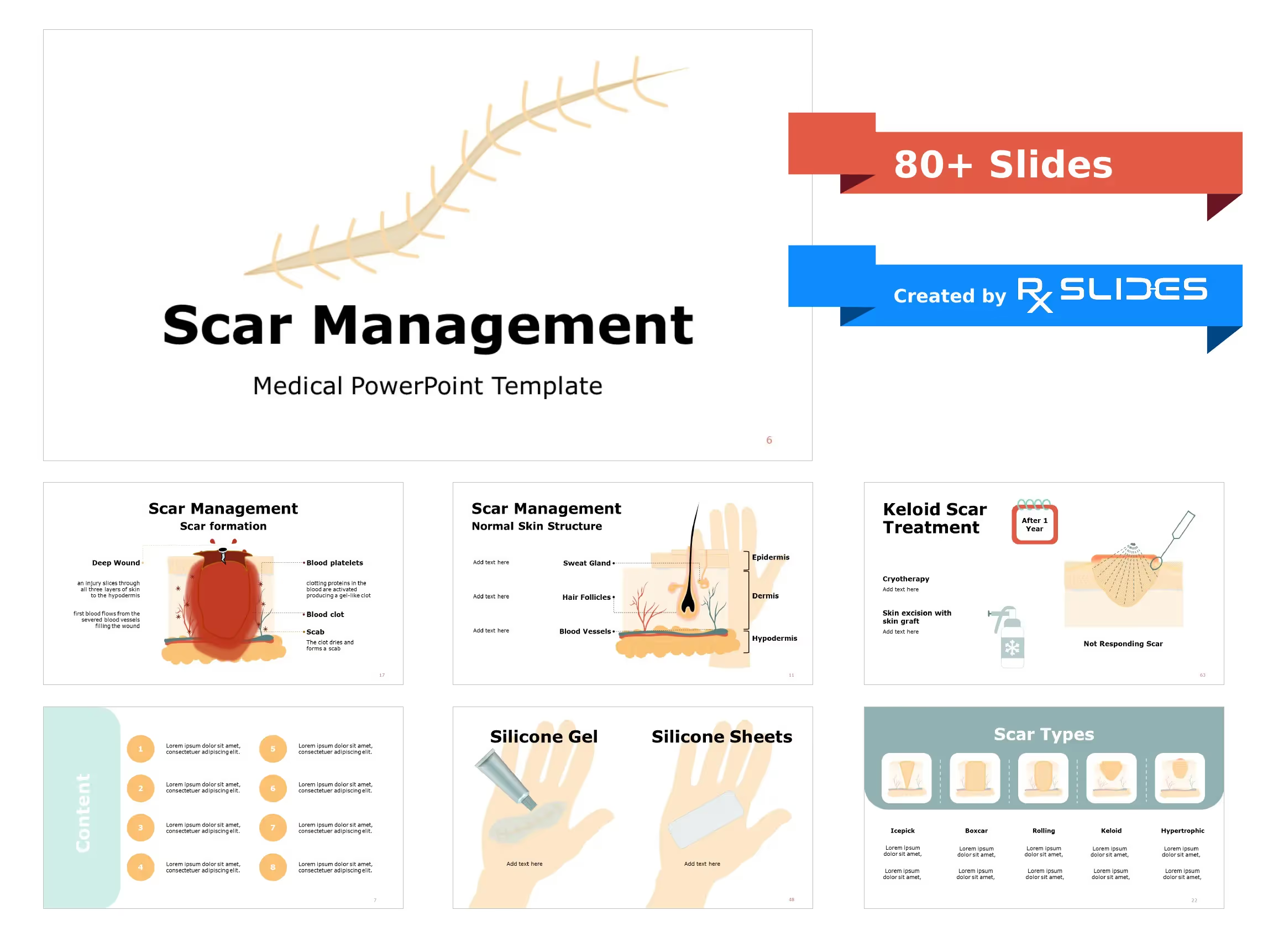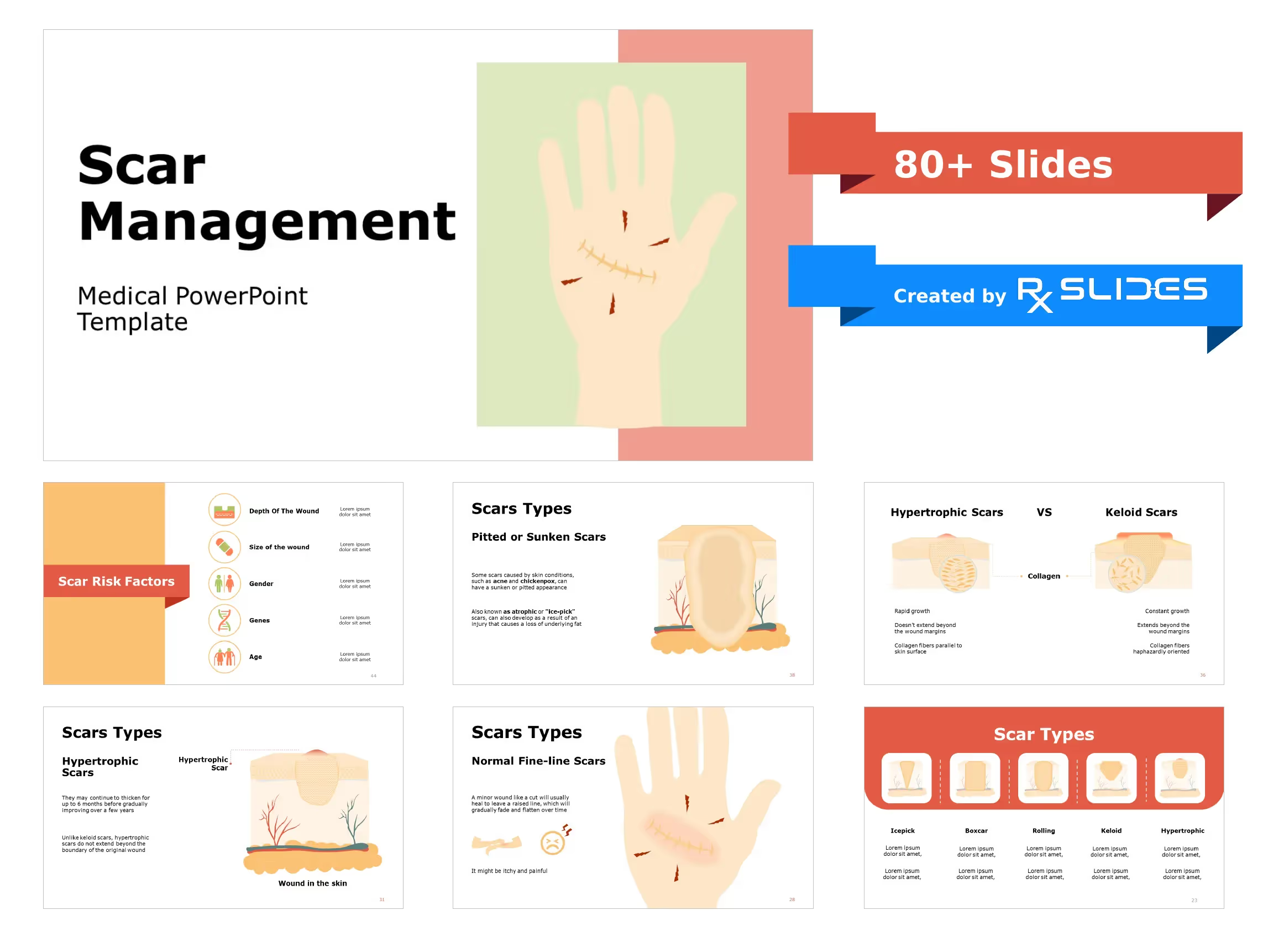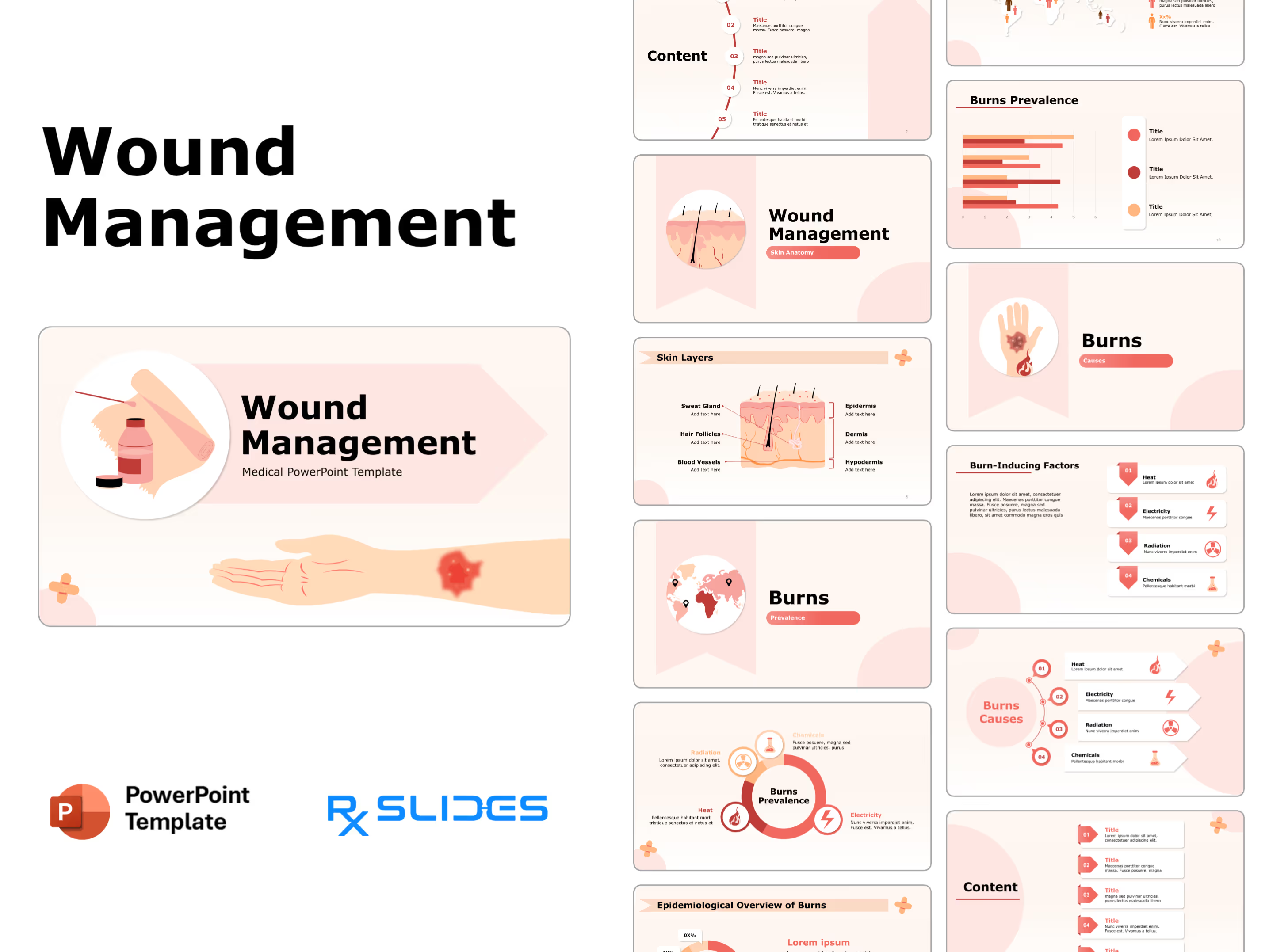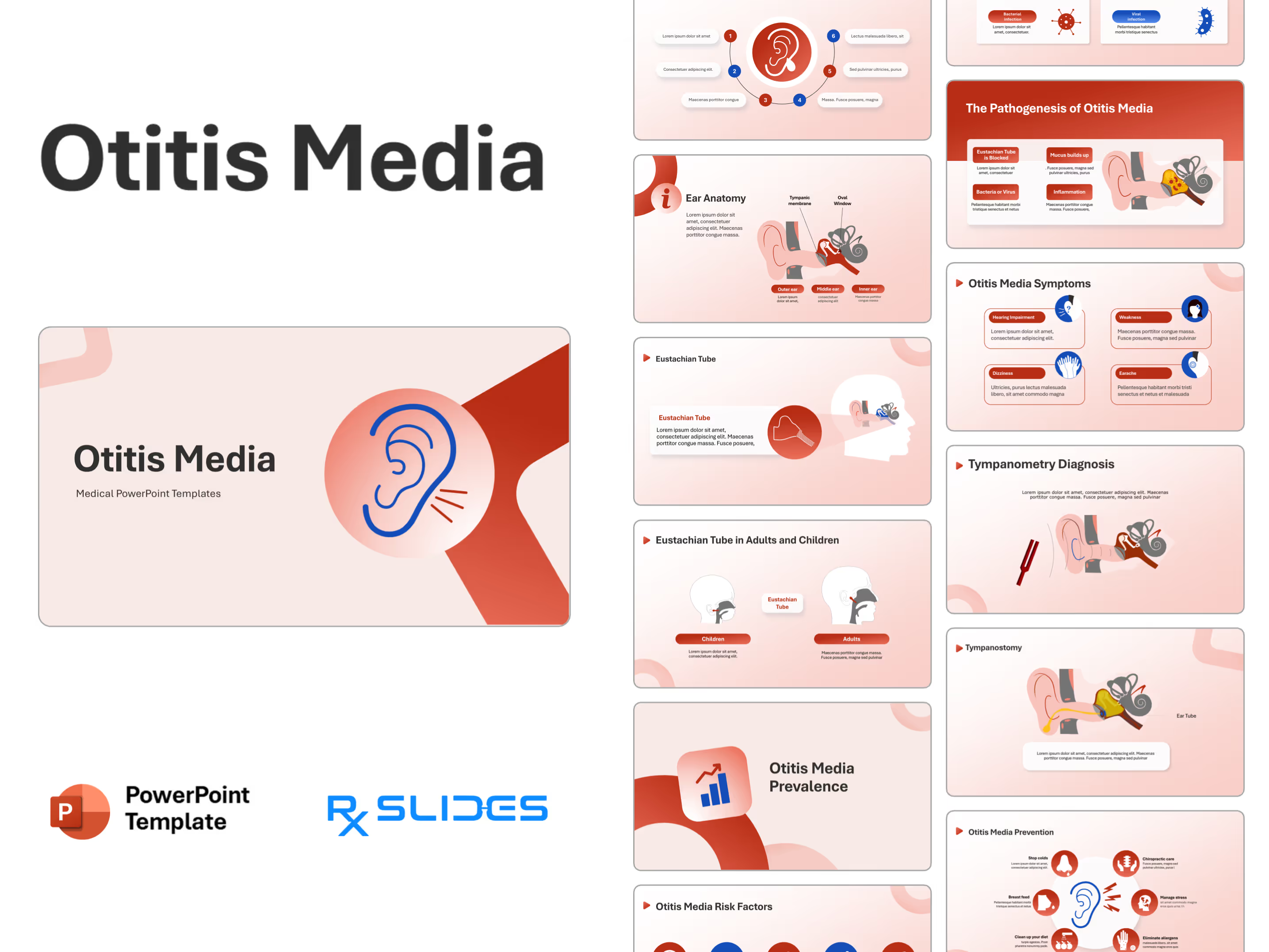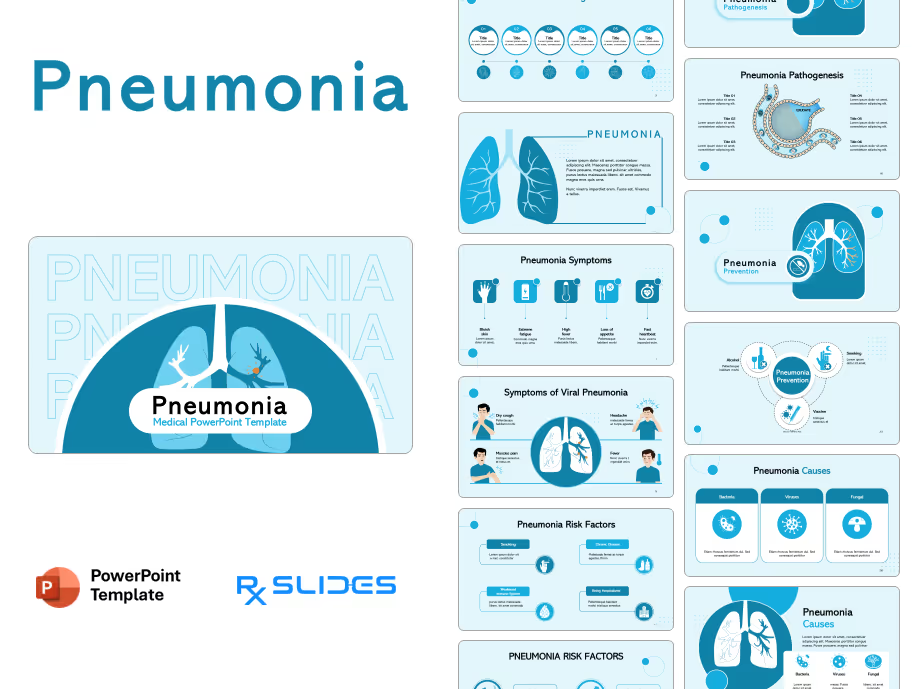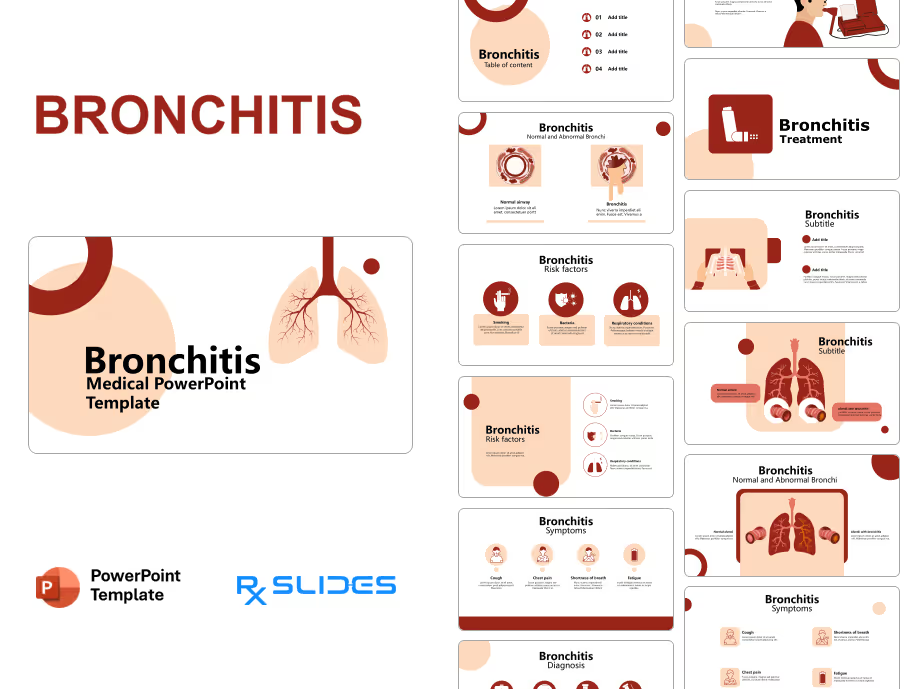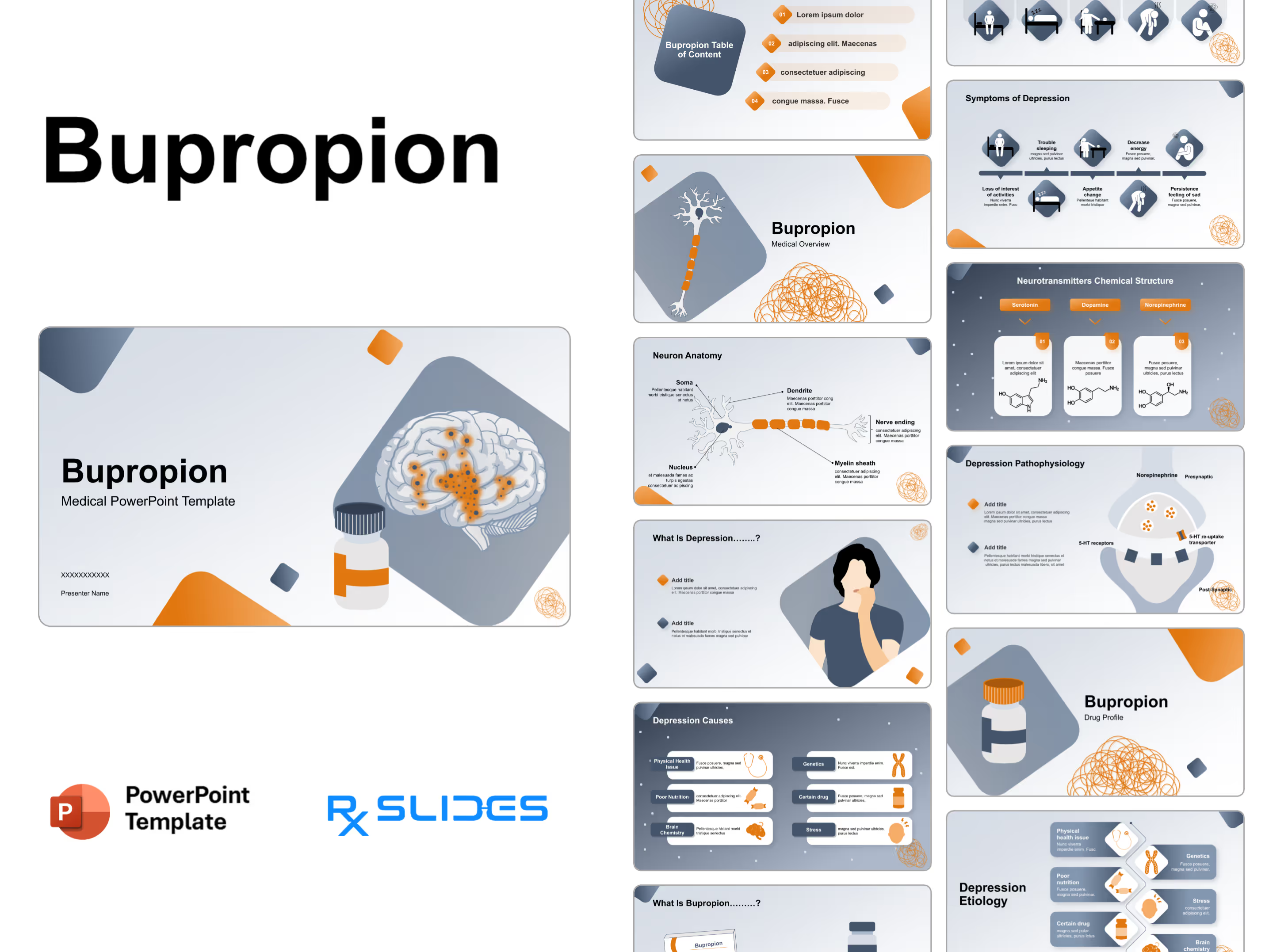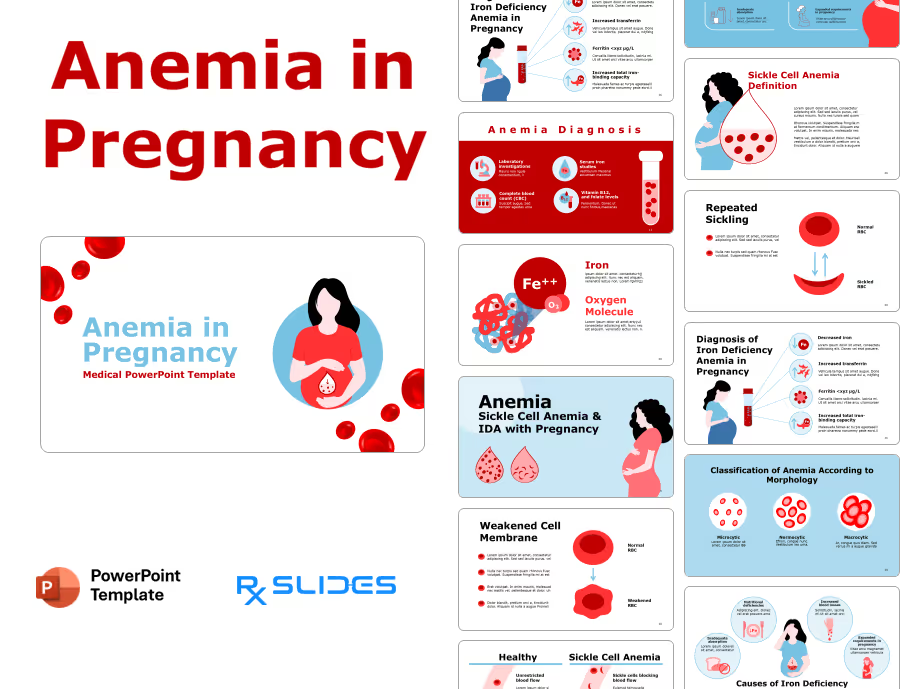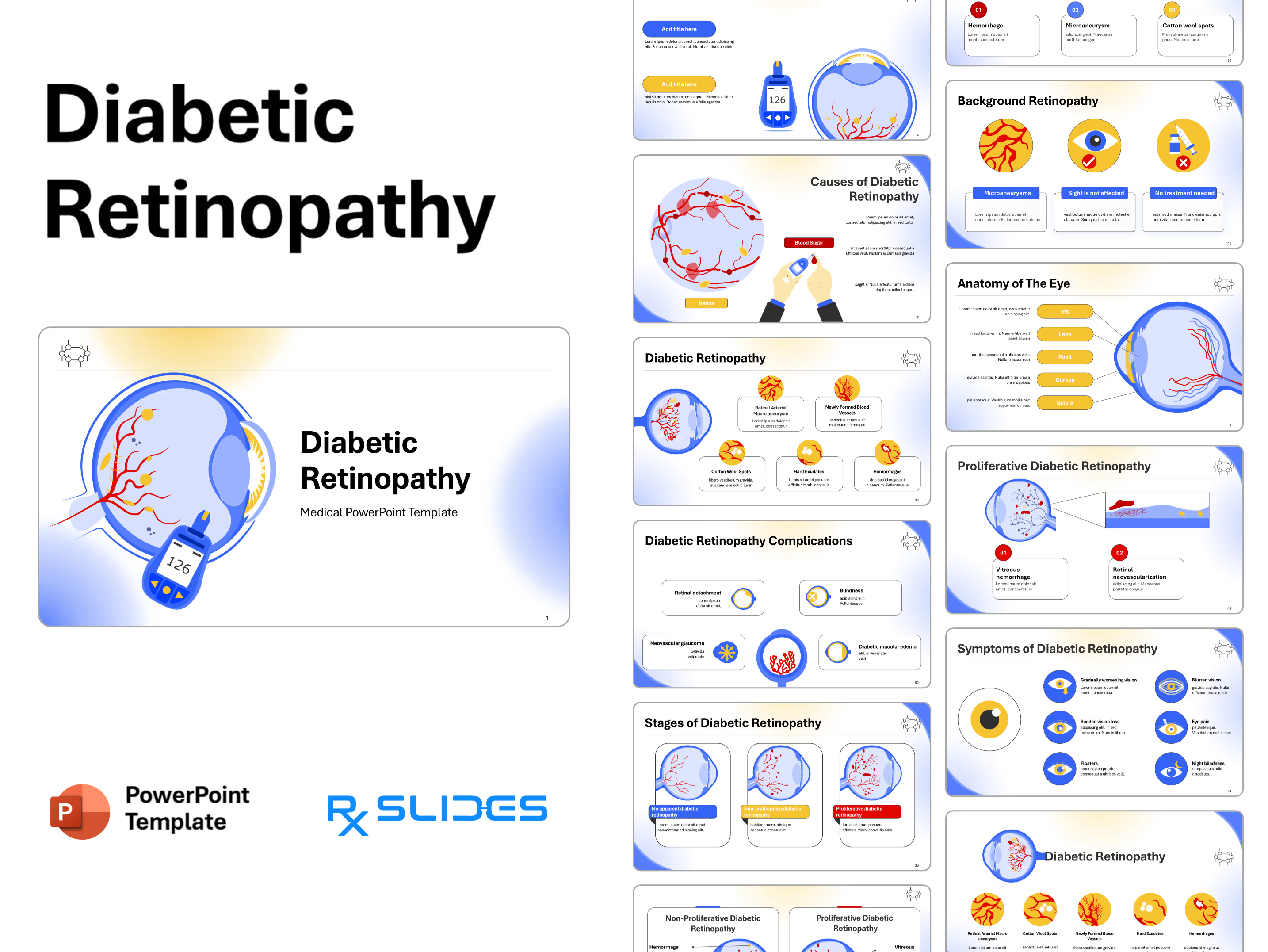Scar PowerPoint Template

Scar Presentation: Medical PowerPoint Template
- The Scar PPT template is an animated medical PowerPoint presentation that will help you realize the full potential of your topics on scar management.
- RxSlides animated template includes medical animations and infographics that will attract your audience.
- You can take advantage of our demonstrated infographics to provide your audience with a dynamic and appealing scar management presentation.
- Our Dermatology PowerPoint Templates provide a powerful tool to accurately and effectively explain various skin conditions.
Scar PowerPoint Template Content
- Creative cover slides to start your Scar PPT presentation.
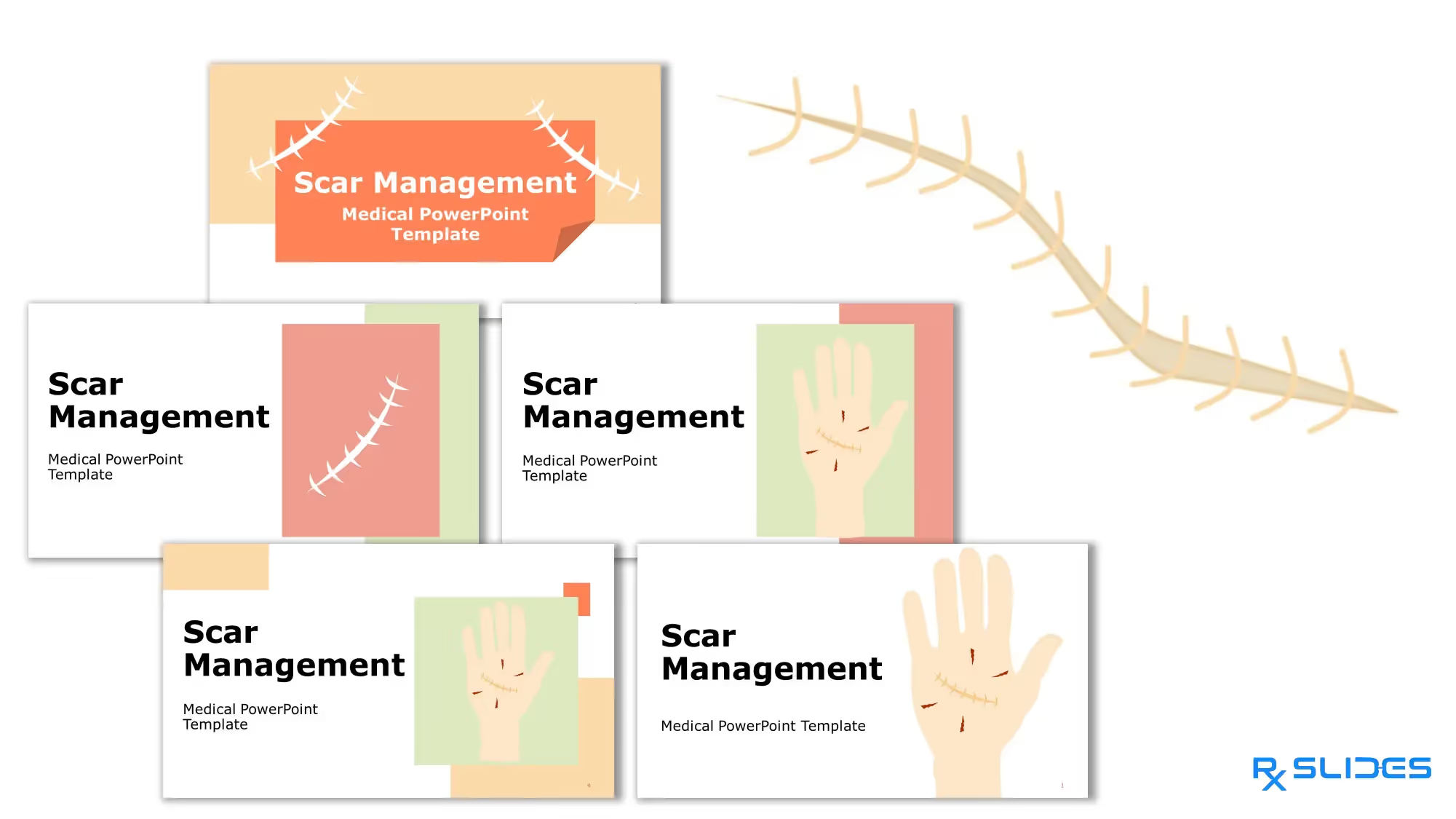
- Dynamic introductory slides covering different topics.
Definition
- A scar is the body's natural way of healing and replacing lost or damaged skin.
- It is usually composed of fibrous tissue.
Anatomy of the skin
- The skin layers, which are the epidermis, dermis and hypodermis, contain hair follicles, sweat glands, nerves and blood vessels.
- Dermal connective tissue composition
- Dynamic slides show the dermal connective tissue composition, which contains.
- Elastin, which forms the horizontal weave and makes up 5% of the weave.
- Collagen, which forms the vertical weave and makes up 80% of the weave.
- Glycosaminoglycans surround and support the matrix.
- All are shown using animated, visually appealing illustrations in the Scar PPT template.
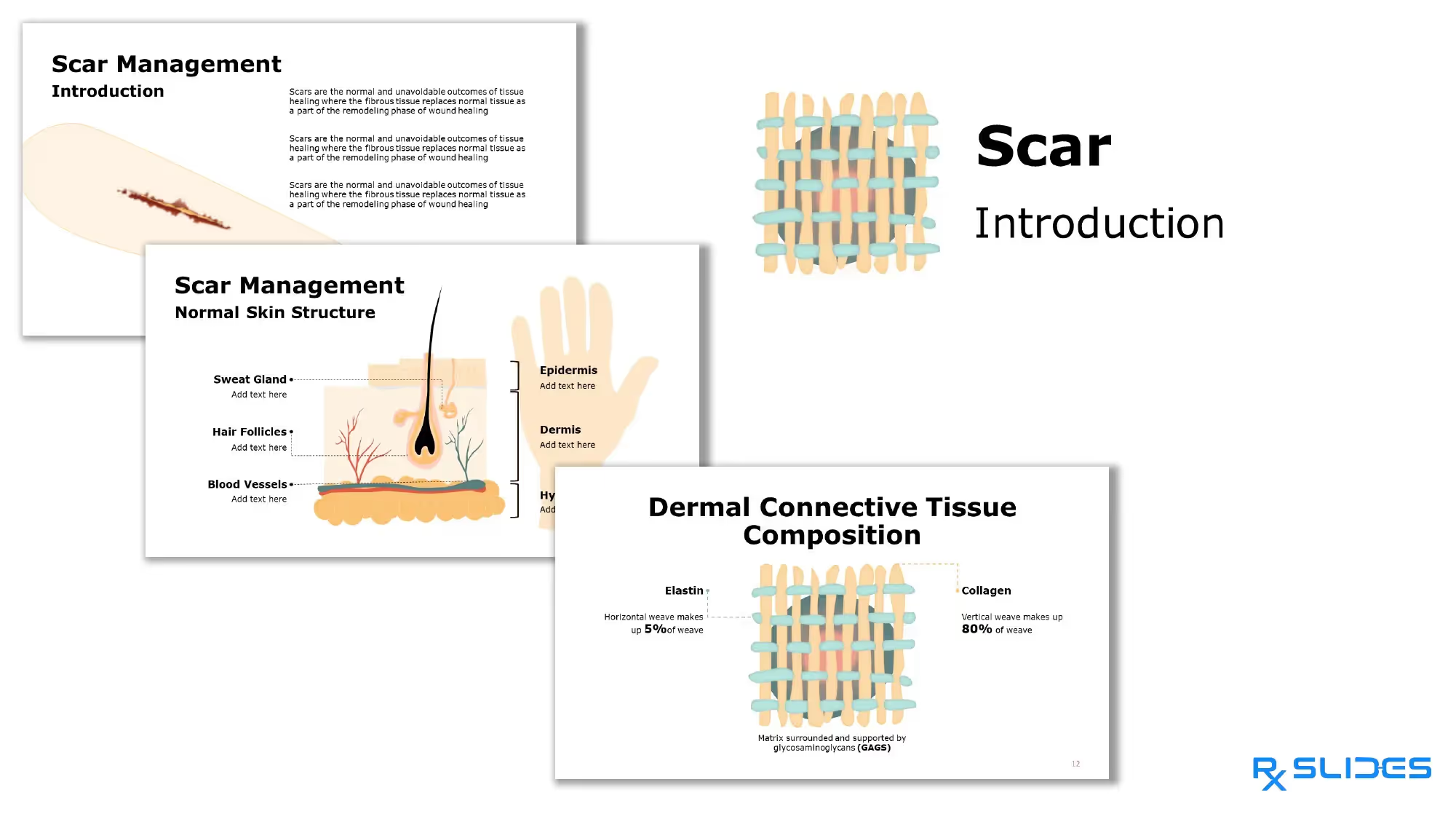
Medical infographics and charts for prevalence
- The prevalence of scars is visualized on infographics in Scar PPT, with changeable percentages of the prevalence according to your data to help you show the prevalence more clearly.

Animated pathophysiology of scar tissue formation
- Scar tissue formation and features are well illustrated using animated illustrations that show an injury slicing through all three layers of skin to the hypodermis.
- First Blood flows from the severed blood vessels filling the wound and clotting proteins in the blood are activated, producing a gel-like clot. The clot dries and forms a scab.
- The skin injury activates fibroblasts, which move to the wound site to fill the cut.
- Collagen is deposited outside of the fibroblasts to form a fibrous matrix; over time, the fibers build up and eventually replace the scab tissue with scar tissue.
- The newly formed scar tissue has no pigment and is smooth to the touch. The tissue is so dense that hair follicles and skin cells are unable to grow.

Risk factors
- The most common risk factors include the depth of the wound, the size of the wound, gender, genes and age.

Medical icons represent causes
- The scar causes are visualized with animated icons that show surgery, sports injuries, acne and burns.

Animated illustrations demonstrating different types of scars
- Animated “Scar types” are illustrated in Scar PPT templates:
- Hypertrophic scars
- Hypo-trophic scars
- Atrophic scars
- Those types subdivide into normal fine-line scars, icepick scars, boxcar scars, rolling scars, hypertrophic scars and keloid scars.
Normal fine-line scars
- Are minor wounds like cuts that will usually heal to leave a raised line, which will gradually fade and flatten over time. They are not usually painful, but they may be itchy for a few months.
Hypertrophic scars
- As illustrated, this type does not extend beyond the boundary of the original wound; it may continue to thicken for up to 6 months before gradually improving over a few years.
Keloid scars
- Are raised above the skin and can be pink, red, the same color, or darker than the surrounding skin; they’re often itchy or painful.
- Animated illustrations in Scar PPT explain how too much collagen is produced at the site of a wound and the scar keeps growing after the wound has healed.
- They commonly form on the shoulders, earlobes and chest. Skin conditions as a result of an injury that results in a loss of underlying fat are what lead to pitted or sunken scars. The explanation is in a visually impressive animated template.

Treatment techniques of scars
- Treatment techniques are visualized and explained In Scar PPT with animated editable icons and illustrations, including silicone gel and silicone sheets.
- An animated illustration shows that scars without silicone treatment can lead to dehydration. This signals fibroblast cells to produce too much collagen, resulting in thick, raised and unsightly scars.
- Applying silicon to scar tissue can keep the scar hydrated. This helps reduce the number of signals sent by the body to the wound, which, in turn, creates less scar tissue.
- Normally, tension forces can cause a widened scar, but silicone helps transfer the tension from the edges of the wound to the silicone itself.
- This creates a negative static field that aligns and organizes the collagen fibers in a more uniform pattern.

Practical Guidelines for scar management
- Scar Management Practical Guidelines 2014 are visualized in visually appealing animated infographics showing linear scar treatment, hypertrophic scar treatment and keloid scar treatment.

preventive measures
- Preventive measures are also mentioned, including healthy lifestyle choices such as covering the wound with a bandage, using silicone covering, avoiding picking at scabs and avoiding sun exposure.

RxSlides visuals for scar PowerPoint presentation
- Set of PowerPoint icons and illustrations related to scar management, which will help you customize the content of this 100% editable presentation according to your content and audience interest.

Features of the Template
- 100% editable PowerPoint template.
- Editable colors, you can change according to your presentation style and company branding guidelines.

